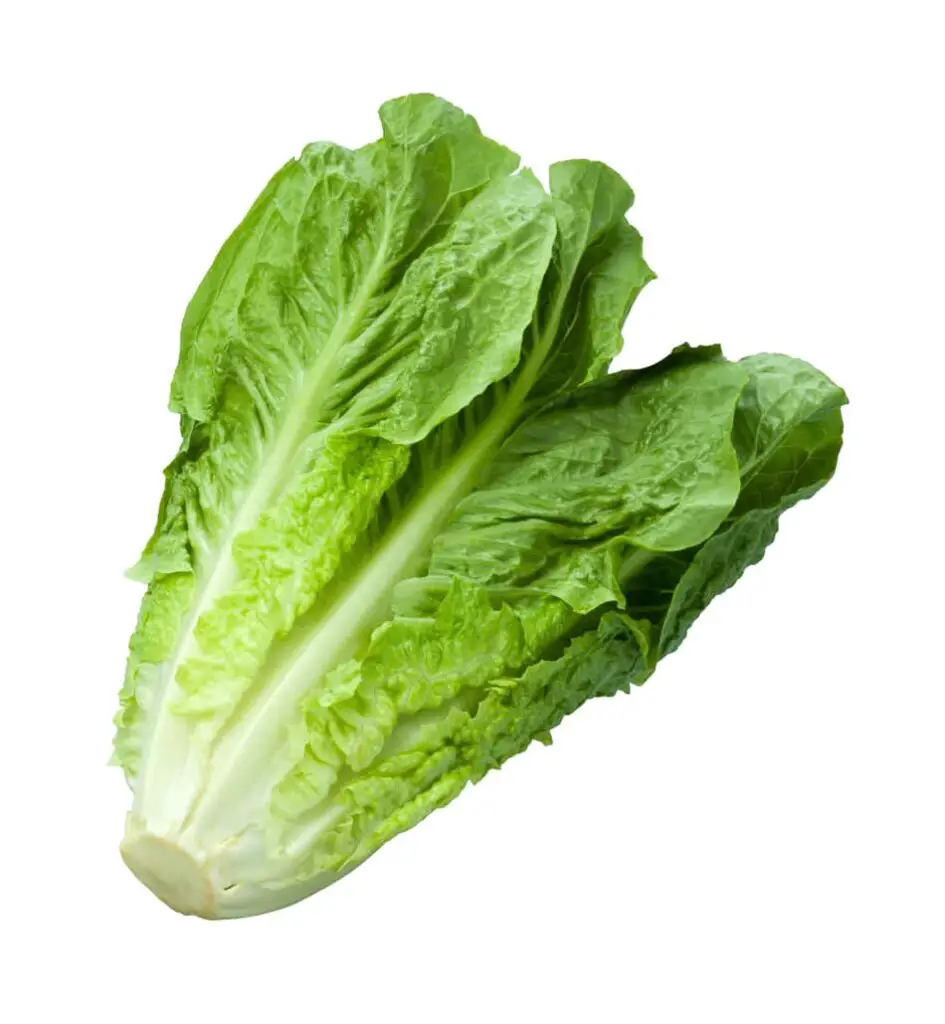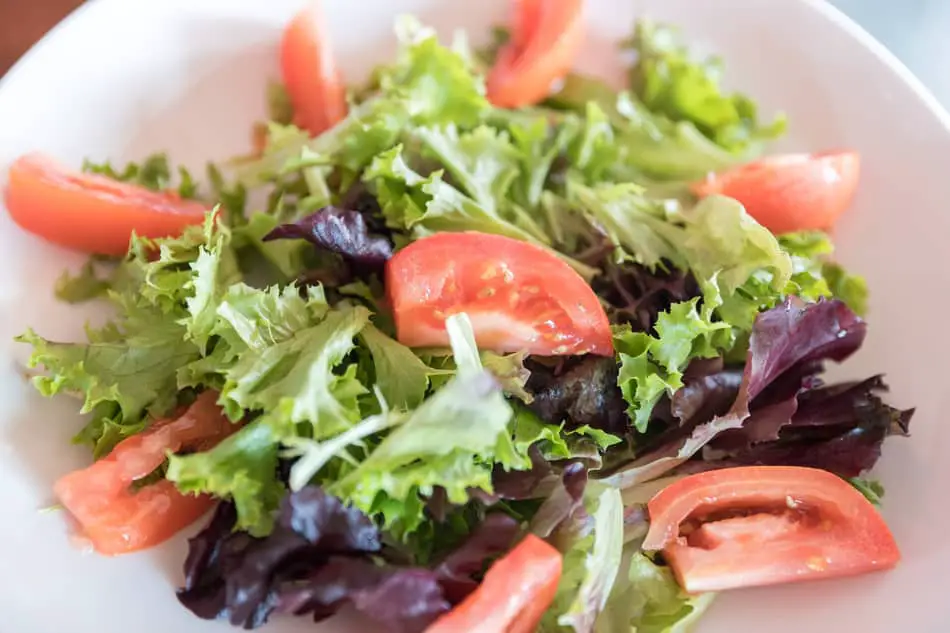
The choices for salad greens can be overwhelming at the grocery store. If you are choosing based on nutrition, this guide can help.
All salad greens or lettuces are great for your health, but they vary widely in their nutritional content. Among all greens for which data is available, the healthiest option, based on having the highest levels of more nutrients, is dandelion.
I have created a comprehensive comparison chart, below, to provide the analyses in this article. It includes information not only on protein, fiber, vitamins, and minerals but also on antioxidant content (when available), which comes from different resources than the rest of the data, as noted.
Since some of the greens that test well are not on everyone’s favorites list, or readily available, I have also provided a comparison of the most popular salad greens.
The Top Three Most Nutritious Salad Greens Overall
Why are dandelion greens the best, nutritionally? They have far more antioxidants than any other lettuce/salad green: four times more than kale, and 53 times more than butterhead lettuce. They are also the top-testing salad green in iron and vitamin K. And, dandelion is extremely high in lutein/zeaxanthin, with more than twice the levels of kale, and almost six times that of romaine.

Kale is the next most nutritious salad green; it is highest among those tested in fiber, calcium, and vitamin C, and, comes in second place in antioxidants and protein. It also has comparatively high levels of many other minerals and vitamins.

Spinach is the next most nutritious salad green, coming in first place for magnesium and folate, and second place for iron, vitamin K, beta carotene and lutein/zeaxanthin. See the comparison chart below for where I derive these conclusions and others in this article.

Kale is Highest in Fiber
Salad greens are a great place to get your daily fiber, which is so essential to good health. If you are making a salad to maximize your fiber, choose kale, collard greens, or kohlrabi. Cabbage is also an excellent option, with twice as much fiber as iceberg lettuce. Grate some cabbage into all of your sales for a crunchy, fiber-filled contrast to softer greens. Cabbage keeps longer than most salad greens in the refrigerator—up to two weeks, and the purple variety adds beautiful color to any green salad.
Escarole is Highest in Vitamin A

Escarole (and frisée and curly endive, which are closely related) is extremely high in Vitamin A—almost five times as much as is found in romaine.
Spinach is Highest in Folate
Leafy greens are typically high in folate. To maximize your folate, choose spinach, which has three times the folate of kale.
The Most Nutritious Popular Salad Green
Among the more familiar and popular leafy salad greens, which in our analysis are butterhead, iceberg, green leaf, red leaf, and romaine, romaine is the overall leader, but green leaf and red leaf are not far behind.
Romaine is highest among the five in fiber, potassium, vitamin C, folate, beta carotene, and lutein/zeaxanthin. Romaine is particularly high in folate, with nearly five times as much as iceberg. And romaine has nearly double the lutein/zeaxanthin as butterhead.
It is a myth that there is no nutritional value to iceberg lettuce. In fact, among these five popular varieties, it has the highest levels of vitamin A. But it does come in last place overall nutritionally among all salad greens (see second chart below for just those 5 varieties).

Comprehensive Comparison Chart—All Salad Greens/Lettuces
This chart provides comprehensive nutrition information for all greens/lettuces for which I could find data.
| Lettuce Variety | Antioxidant content (mmol/100g) | Protein (grams) | Fiber (grams) | Calcium (mg) | Iron (mg) | Magnesium (mg) | Potassium (mg) | Vitamin C (mg) | Folate (µg) | Vitamin A (µg) | Vitamin K (mg) | Beta Carotene (µg) | Lutein/ Zeaxanthin (µg) |
| Arugula (AKA rocket; Italian Cress) | N/A | 2.58 | 1.6 | 160 | 1.46 | 47 | 369 | 15 | 97 | 119 | 109 | 1,420 | 3,560 |
| Butterhead (includes Bibb and Boston) | 0.13 | 1.35 | 1.1 | 35 | 1.24 | 13 | 238 | 3.7 | 73 | 166 | 102 | 1,990 | 1,220 |
| Cabbage | 0.02 | 1.28 | 2.5 | 40 | 0.47 | 12 | 170 | 36.6 | 43 | 5 | 76 | 42 | 30 |
| Chinese Cabbage (AKA Napa Cabbage; pak-choi) | 0.47 | 1.5 | 1 | 105 | 0.8 | 19 | 252 | 45 | 66 | 223 | 45.5 | 2,680 | 40 |
| Collard | N/A | 3.02 | 4 | 232 | 0.47 | 27 | 213 | 35.3 | 129 | 251 | 437 | 2,990 | 4,320 |
| Dandelion | 6.89 | 2.7 | 3.5 | 187 | 3.1 | 36 | 397 | 35 | 27 | 508 | 778 | 5,850 | 13,600 |
| Endive | 0.10 | 1.25 | 3.1 | 52 | 0.83 | 15 | 314 | 6.5 | 142 | 108 | 231 | 1,300 | 0 |
| Escarole (Frisée and Curly Endive are closely related) | N/A | 1.18 | 3.5 | 47 | 0.85 | N/A | N/A | 7.1 | N/A | 2,059 | N/A | N/A | N/A |
| Green Leaf (AKA Leaf Lettuce) | 0.24 | 1.36 | 1.3 | 36 | 0.86 | 13 | 194 | 9.2 | 38 | 370 | 126 | 4,440 | 1,730 |
| Iceberg (AKA Crisphead) | 0.17 | 0.9 | 1.2 | 18 | 0.41 | 7 | 141 | 2.8 | 29 | 502 | 24.1 | 299 | 277 |
| Kale | 1.62 | 2.92 | 4.1 | 254 | 1.6 | 33 | 348 | 93.4 | 62 | 241 | 390 | 2,870 | 6,260 |
| Kohlrabi | N/A | 1.7 | 3.6 | 24 | 0.4 | 19 | 350 | 62 | 16 | 2 | 0.1 | 22 | 0 |
| Mustard | N/A | 2.86 | 3.2 | 115 | 1.64 | 32 | 384 | 70 | 12 | 151 | 258 | 1,790 | 3,730 |
| Radicchio | N/A | 1.43 | 0.9 | 19 | 0.57 | 13 | 302 | 8 | 60 | 1 | 255 | 16 | 8,830 |
| Red Leaf | 0.23 | 1.33 | 0.9 | 33 | 1.2 | 12 | 187 | 3.7 | 36 | 375 | 140 | 4,500 | 1,720 |
| Romaine (Little Gem is closely related) | 0.21 | 1.23 | 2.1 | 33 | 0.97 | 14 | 247 | 4 | 136 | 436 | 102 | 5,230 | 2,310 |
| Spinach | 0.89 | 2.86 | 2.2 | 99 | 2.71 | 79 | 558 | 28.1 | 194 | 469 | 483 | 5,630 | 12,200 |
| Watercress | N/A | 2.3 | 0.5 | 120 | 0.2 | 21 | 330 | 43 | 9 | 160 | 250 | 1,910 | 5,770 |
Sources:
Based on 100 grams of raw greens.
Note: Mesclun and Spring Greens, which are popular salad types, are not included in the list as they are actually mixes of different greens which can vary; many of their ingredients are in the above chart.
Comprehensive Comparison Chart—Most Popular Salad Greens/Lettuces (in the U.S.)
Here are just the five more popular, readily-available lettuces/greens compared together, for convenience:
| Lettuce Variety | Antioxidant content (mmol/100g) | Protein (grams) | Fiber (grams) | Calcium (mg) | Iron (mg) | Magnesium (mg) | Potassium (mg) | Vitamin C (mg) | Folate (µg) | Vitamin A (µg) | Vitamin K (mg) | Beta Carotene (µg) | Lutein/ Zeaxanthin (µg) |
| Butterhead (includes Bibb and Boston) | 0.13 | 1.35 | 1.1 | 35 | 1.24 | 13 | 238 | 3.7 | 73 | 166 | 102 | 1,990 | 1,220 |
| Green Leaf (AKA Leaf Lettuce) | 0.24 | 1.36 | 1.3 | 36 | 0.86 | 13 | 194 | 9.2 | 38 | 370 | 126 | 4,440 | 1,730 |
| Iceberg (AKA Crisphead) | 0.17 | 0.9 | 1.2 | 18 | 0.41 | 7 | 141 | 2.8 | 29 | 502 | 24.1 | 299 | 277 |
| Red Leaf | 0.23 | 1.33 | 0.9 | 33 | 1.2 | 12 | 187 | 3.7 | 36 | 375 | 140 | 4,500 | 1,720 |
| Romaine (Little Gem is closely related) | 0.21 | 1.23 | 2.1 | 33 | 0.97 | 14 | 247 | 4 | 136 | 436 | 102 | 5,230 | 2,310 |
Sources:
Based on 100 grams of raw greens.
For this group of leafy salad greens/lettuces, total phenolic content has been calculated in a study by Kim, Moon (University of West Va) et al.

All Salad Greens/Lettuces are Healthy!

To reiterate, all salad greens and lettuces are good for you; you can’t go wrong by eating any clean, fresh greens every day (choose organic if you can). If you have specific nutritional goals, like you are trying to increase your iron, or minimize your potassium, I hope this guide helps you make the best choice for you.
Otherwise, the best policy is to eat a wide range of types of greens over time. That way you get the full range of nutritional benefits these foods offer. But the absolute best salad green for you is the one you’ll eat; so choose what you’ll love.
Happy eating!
Curious about the healthiest apple? Click here.
Wonder about the healthiest pear? Get the science-backed answer here.
Learn what produce needs to be peeled before eating here.
Resources
- USDA FoodBank
- The Antioxidant Food Table
- Kim, Moo Jung & Moon, Youyoun & Tou, Janet & Mou, Beiquan & Waterland, Nicole. (2016). Nutritional Value, Bioactive Compounds and Health Benefits of Lettuce (Lactuca sativa L.). Journal of Food Composition and Analysis. In Press. 10.1016/j.jfca.2016.03.004.
